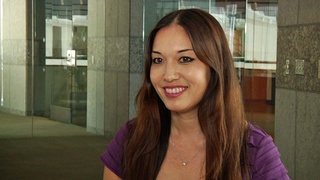Interviews
Refusing to use a Chinese name to identify as Asian American
I had hoped for one, that’s what I really wanted. And I think among those artists that I mentioned I have great respect for, were peers and colleagues and I feel great kinship with them because we all kind of struggled through the same things. At the same time I had to, being Hapa, I had to establish myself as Asian American, which is something I didn’t think I would have to do. When I was in school I was a member of APSA, and you know, and I would do these kinds of Asian American things, and I would go to obon festivals, and living in Hawai`i I’d do these things, and traveling in Japan and traveling in China felt, you know, I had a great feeling for being Asian American.
But I remember when I sent my first film out, I sent it and it got into a couple of festivals and one major Asian American film festival rejected it. And I talked to a guy who worked for this organization and he said, “You know what, Kip, if you really want to get in, you ought to start using a Chinese name. Because you know—I’m not saying this is why you didn’t get in, but we look at this name—‘Kip Fulbeck’—and it’s pretty WASP-y.” And so he said, “Maybe you should just use your mom’s middle name, your mom’s last name as your middle name.”
And I know a lot of my colleagues have done that, and a lot of writers and actors and newscasters do that, but I just felt—that kind of put a chip on my shoulder and I didn’t do it because of that. Since now I’ve sort of established myself as an artist with at least some kind of credibility, it’s nice that I don’t have to do that anymore.
Date: May 3, 2006
Location: California, US
Interviewer: Jim Bower
Contributed by: Watase Media Arts Center, Japanese American National Museum.
Explore More Videos


Culture is an important part of one's identity
Jewish Japanese American journalist



Conflicted about immigrating to America (Japanese)
(b. 1925) War bride

Defining "Nikkei"
(1941-2018) Japanese Canadian photojournalist and activist

Unique Identity from Having Multiple Backgrounds
(b. 1938) Philipines-born hikiagesha who later migrated to the United States.

Growing up Japanese in Hawaii
(b. 1952) Former banking executive, born in Hawaii



Parents identification as Peruvian Okinawan
Okinawan American whose parents are from Peru.

Okinawan cultural appreciation
Okinawan American whose parents are from Peru.

Prejudice against Okinawans from mainland folks
Okinawan American whose parents are from Peru.

American values she aligns with
Okinawan American whose parents are from Peru.

Working together in Okinawa using three languages
Okinawan American whose parents are from Peru.
